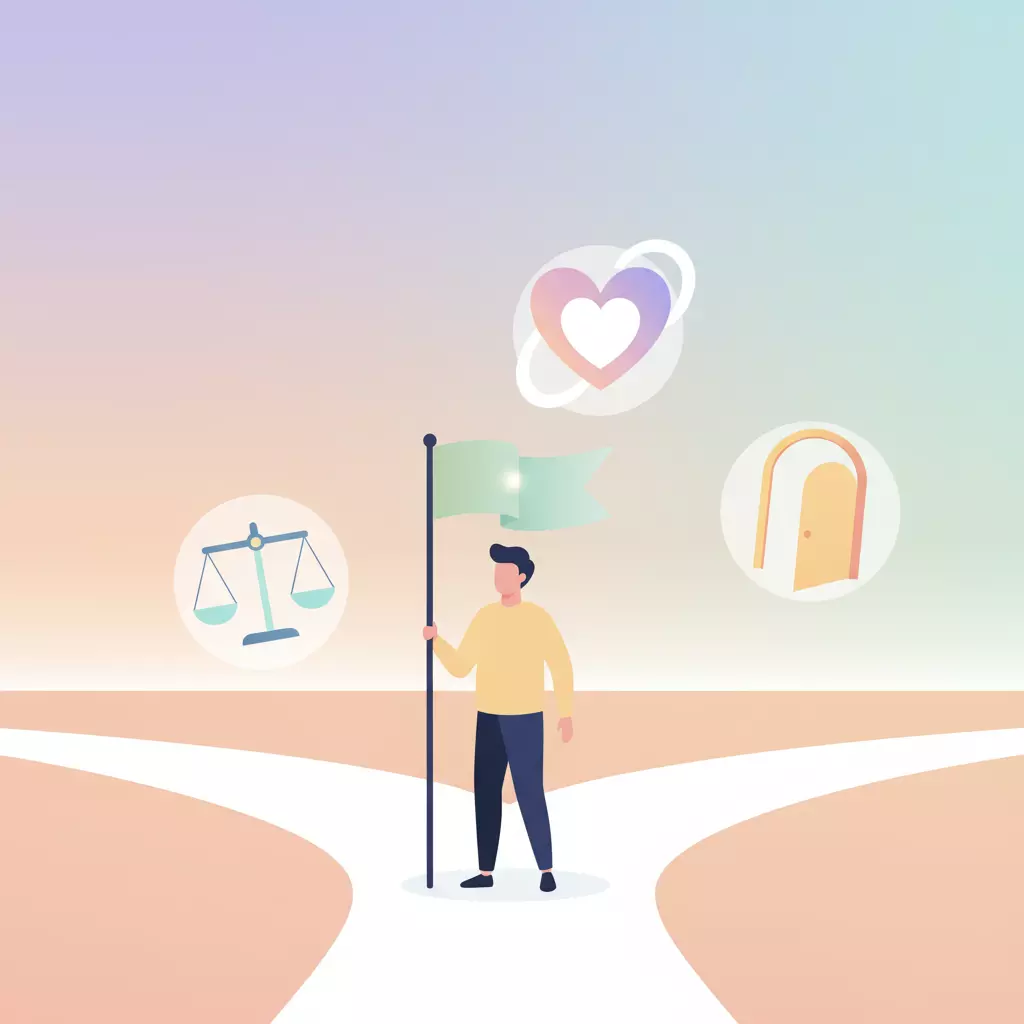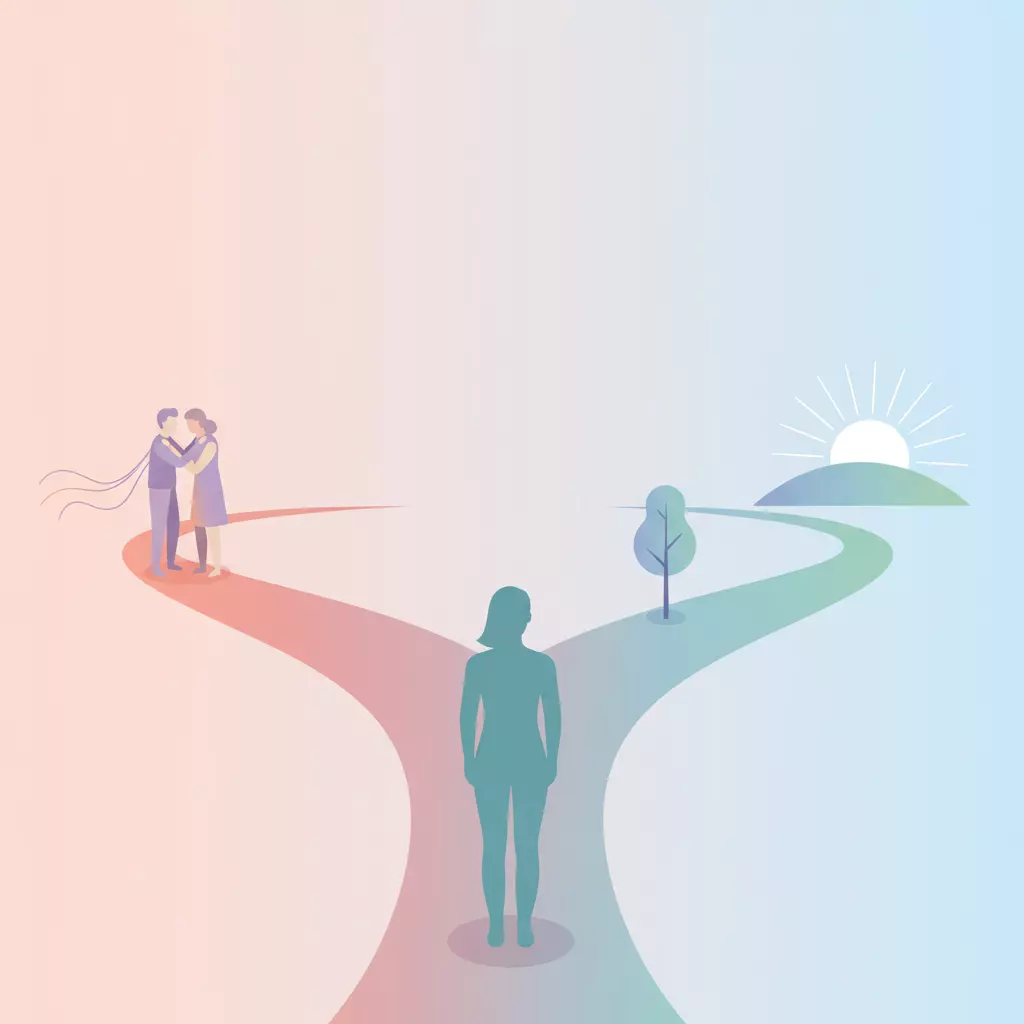Table of Contents
There’s a quiet kind of ache that follows a breakup, especially in queer circles where lives and friend groups overlap. You might find yourself ducking into a different café just to avoid that electric sting of seeing her again. “No contact” isn’t punishment — it’s oxygen. It’s the space you give yourself so you can remember who you are outside of her orbit. This is where lesbian breakup boundaries begin their work: not in pushing someone away, but in pulling yourself back together.
But then comes the question: how do you know when that silence has healed you, and when it’s just hiding unfinished pain? And if the healing is real, is there ever a moment to talk again?
When silence shifts from avoidance to healing
At first, no contact can feel like white-knuckling. Every day is just not texting, not checking her socials, not replaying the breakup in your head. That’s avoidance — and while it gives short-term relief, it doesn’t offer growth.
Healing looks different. You’ll notice the shift when she’s no longer the headline in your mind. You still think of her, but it’s not obsessive. You’re making decisions based on what you want — not on how she might react. Your energy flows into work, friendships, hobbies.
- Less rumination (fewer obsessive thoughts)
- More adaptive coping (healthy routines, problem-solving)
- Energy flowing into friendships, work, and hobbies
Research confirms that these are strong signs your lesbian breakup boundaries are working.

When (if ever) to consider speaking again
There isn’t a universal timeline. The real marker isn’t time, but emotional readiness.
- If talking to her feels like scratching at a half-healed wound → it’s not time.
- If the idea makes you anxious for validation or hoping she’ll change her mind → it’s not time.
Talking again becomes possible when the grief has been metabolized.
When you can approach her without collapsing into old dynamics. When a conversation would come from self-respect and boundary, not desperation.
If you can name why the relationship ended and stand in that truth without spinning out, then you may be ready.

No Contact Isn’t a Game – It’s a Healing Strategy
Let’s examine the No Contact strategy in: Science & Psychology, Planning it, Digital Hygiene, Relapses-Cravings & Crashes, Special Cases & Exceptions… and Signs that it’s working +What comes next.
Tap here to read more →What comes after the reconnection
Sometimes, you’ll talk and realize there’s enough healing to be cordial — to coexist in shared queer spaces without tension.
Other times, even a small conversation reignites chaos. In that case, the healthiest boundary is distance. Neither outcome is failure.
The point isn’t to rebuild what was lost, but to honor what you’ve gained:
- Independence
- Confidence
- Clarity about your needs
- The ability to connect in new ways — with friends, with lovers, with yourself

The silence isn’t the end of the story. It’s the space between chapters, where you breathe, grieve, and grow.
And when you do speak again — or choose never to — it will be from a place of strength, not survival.
FAQ
Q1. How do I know if my lesbian breakup boundaries are actually working?
Boundaries are working when you notice less rumination about your ex, feel calmer in your daily routine, and are able to focus on your own growth.
Q2. When is it too soon to talk to an ex after no contact?
It’s too soon if you still feel anxious, desperate for validation, or secretly hope she’ll change her mind.
Q3. Can talking again ruin my progress after a breakup?
Yes, if the conversation reopens wounds or pulls you back into old dynamics. The key is checking in with yourself first.
Q4. What are good signs that I’m ready to reconnect with my ex?
Good signs include emotional balance, clarity about why it ended, and the ability to approach her with boundaries and confidence.
Scientific Sources
-
Mancone, S.; Celia, G.; Bellizzi, F.; Zanon, A.; Diotaiuti, P. (2025): Emotional and cognitive responses to romantic breakups in adolescents and young adults: the role of rumination and coping mechanisms in life impact
Key Finding: Higher rumination predicts worse outcomes, while adaptive coping reduces distress and supports healing.
Why Relevant: Shows that reduced rumination and healthier coping are clear signs no-contact and boundaries are working.
https://www.frontiersin.org/journals/psychiatry/articles/10.3389/fpsyt.2025.1525913/full -
Marshall, T. C.; Bejanyan, K.; Ferenczi, N. (2013): Attachment Styles and Personal Growth following Romantic Breakups: The Mediating Roles of Distress, Rumination, and Tendency to Rebound
Key Finding: Anxious individuals experience more distress but also more growth over time; avoidant individuals suppress distress but show less growth.
Why Relevant: Clarifies when reconnection is healthier — after distress is processed into growth, not just suppressed.
https://doi.org/10.1371/journal.pone.0075161 -
Tiron, M.-L.; Ursu, A. (2023): Personal growth and psychological well-being after a romantic breakup among emerging adults
Key Finding: Social support and clarity about the breakup predict greater growth and wellbeing, while uncertainty increases stress.
Why Relevant: Signals that readiness to talk again comes with support and clarity, not confusion or neediness.
https://www.pjp.psychreg.org/wp-content/uploads/7-3-mihaela-laurentia-tiron-54-64-0754.pdf
- No Contact Healing: Powerful Habits That Make Breakup Recovery Stick

- Ready to Date Self-Audit: Powerful Green Flags & Values Check for Love

- Reintroducing Contact After No Contact: Powerful Signs, Timing & Likely Outcomes

- Queer Folks Dating After a Breakup: Powerful Signs You’re Healing Without Losing Yourself

- Transgender Healing After Heartbreak: Powerful Signs of Safety, Care & Affirmation

- Lesbian Breakup Boundaries: Positive Signs You’re Ready to Talk Again

- Gay Men: How to Reenter Shared Spaces After a Breakup Without Spiraling (Readiness Checklist)

- Women: 7 Empowering Signs No-Contact Is Working (and Youre Healing)

- Men: 10 Powerful No Contact Signs You’re Healing (Even If You Feel Nothing Yet)

Leave a Reply